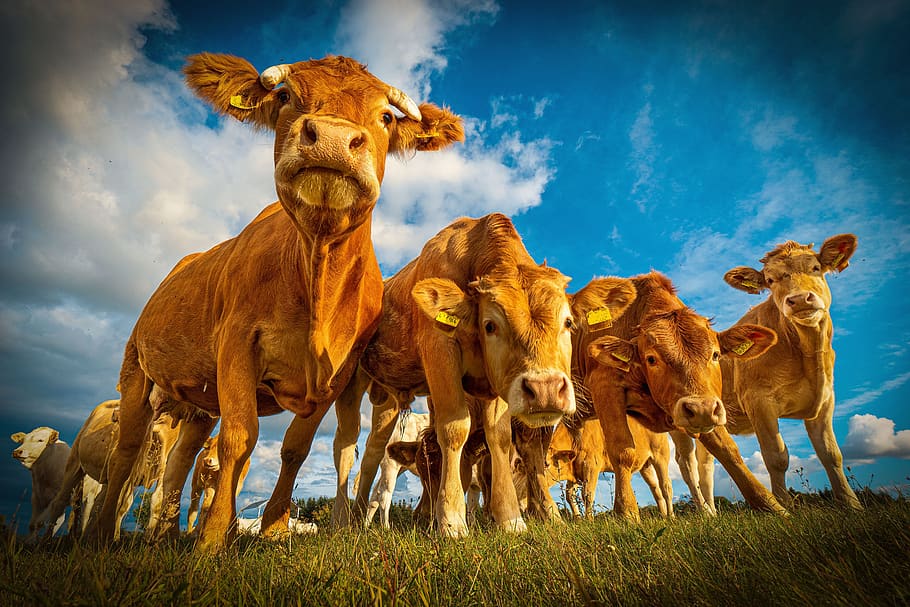
Lab-cultured meat will need to be more economical if it can help meat producers meet demand, according to researchers. (PXFUEL)
Computer models may add sizzle to plans to make cultivated meat alternatives
Posted on May 21, 2020UNIVERSITY PARK, Pa. — Experts predict that producing meat in a lab using tissue engineering techniques — or lab-cultured meat — will one day be a much more sustainable, nutritionally equivalent and without the ethical concerns of typical meat production. However, producing meat economically in a lab remains a problem.
Now, Penn State chemical engineers suggest that using computers to analyze the metabolic needs of livestock animal growing cells — or genome-scale metabolic modeling — could help food scientists design processes and growth media that produce meat at scales suitable for commercialization.
“To this day cultured meat alternatives remain prohibitively expensive,” said Costas D. Maranas, Donald B. Broughton Professor of the Department of Chemical Engineering and an Institute for Computational and Data Sciences associate. “By far the biggest expense is the cost for the components that make up the cell growth medium. Metabolic modeling can help find ways to come up with nutrient combinations that would be less expensive and more in tune with the metabolic needs of the growing cells.”
Metabolic modeling uses computers to determine how genes produce proteins in an organism, such as cattle and chickens, said Patrick Suthers, post-doctoral scholar in chemical engineering. The goal, then, would be to take that information to precisely guide the production of cultured meat that is both high quality and as cost-effective as possible.
“Ideally, you want to use the most inexpensive way to feed growing cells to get the results that you want,” said Suthers. “But, it’s really about efficiency, so it might not necessarily be the fastest growth media. For example, you could have a slower growing media, but it might be substantially less expensive to produce.”
To make meat using this process, researchers take cells from animals and then multiply these cells many times over. Currently, this process is restricted to small-scale operations in labs, which makes it too expensive for average consumers. However, by producing larger volumes of meat, lab-cultivated meat may become a more desirable alternative to current meat production.
“Chemical engineering and metabolic modeling have not been used in this area before,” said Suthers. “What we’re really trying to do here is look at some of the steps that researchers have done for other processes and conceive of a process that fits this system.”
The researchers, who released their review in a recent issue of the Journal of American Institute of Chemical Engineers, suggest that reliance on the current meat production is causing growing environmental and health problems.
According to the researchers, raising livestock is responsible for approximately 18% of greenhouse gas emissions. Livestock directly or indirectly accounts for 70% of all agricultural land, amounting to 30% of Earth’s land surface and for over 8% of global human water use.
“The amount of meat that is being consumed is increasing and if you look at the amount of resources required to meet that demand, including the land and the crops required to feed the animals, it has a big impact on the environment,” said Suthers. “In industrial agriculture, there’s also an increased chance that diseases, such as viruses and bacteria, are going to spread within the herds. Cattle also produce methane, so there are some climate impacts, as well.”
Because raising livestock also raises animal welfare concerns, lab-cultivated meat may be an appealing option for people who are opposed to meat-eating because of religious or ethical reasons, he added.
While the notion of making meat in a laboratory may be hard to picture for most people, comparing it to a brewery may be a better way to visualize the process, said Suthers.
“It may sound unusual, but, in many ways, this could be similar to a brewery,” said Suthers. “In a brewery, you’ll find large steel tanks, vats and other pieces of equipment, which people don’t necessarily equate with something that’s lab-based. But the same things that people are doing in a brewery to make people’s beer or alcohol, you could do in a lab.”
Suthers said more work needs to be done to make lab-cultured meat a reality, but he added that introducing computer models is a critical step in that direction.
“We’re still in the early stages of putting the pieces together,” said Suthers. “But, we think that computer modeling could make a big impact on this.”
